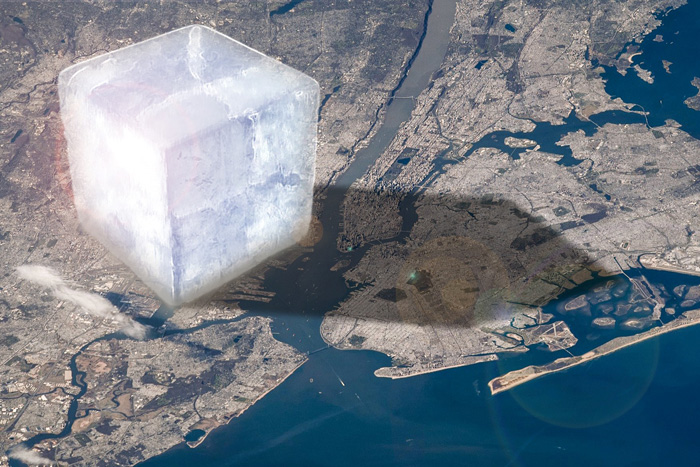All over the world the rate of ice melt is accelerating with climate change, on land and in water, in the northern hemisphere and the southern hemisphere.
Since 1994, satellite imagery has revealed over 28 trillion tonnes of ice have melted in Greenland and Antarctica, as well as the Arctic and Southern Oceans.
Together, the loss amounts to a 100-metre thick sheet of ice roughly the size of the United Kingdom. Meltwater from Arctic sea ice and the Antarctic ice sheet make up half of that mass.
"The ice sheets are now following the worst-case climate warming scenarios set out by the Intergovernmental Panel on Climate Change," says Thomas Slater who studies land and ice altimetry at the University of Leeds.
"Sea-level rise on this scale will have very serious impacts on coastal communities this century."
It's exactly what scientists have been warning us about for decades, and the reality is finally upon us with no signs of slowing down.
Over the course of the 23-year-long study period, researchers saw close to a 60 percent increase in the rate of global ice loss.
Above: According to the European Space Agency (ESA), "one trillion tonnes of ice can be thought of as a cube of ice measuring 10x10x10 kilometres". In this illustration, that ice cube, which the ESA says would be taller than Mount Everest, towers over New York City.
Just last year, floating ice cover in the Arctic Ocean hit its lowest extent since 1979 when satellite recordings began, and Antarctica experienced a melt event unlike anything experts had seen before.
The loss of Earth's ice is clearly speeding up and with horrifying results. As atmospheric temperatures continue to rise and ocean temperatures follow, melting sea ice and mountain glaciers across the globe are succumbing to climate change.
Satellite observations reveal glaciers are some of the hardest hit by climate change, especially those in Greenland, Alaska, and the southern Andes. Despite the fact that glaciers make up only 1 percent of Earth's total ice volume, researchers found they contributed almost a quarter of all global ice loss.
Between 1994 and 2017, satellite observations reveal 6.1 trillion tonnes of ice melted from mountain glaciers, 3.8 trillion tonnes were lost from the Greenland ice sheet, and 2.5 trillion tonnes disappeared from the Antarctic ice sheet.
Overall, that's 35 millimetres (1.4 inches) of sea level rise, and while southern ice has proved more resilient, it too is beginning to crumble.
Since 2012, the rate of ice loss in Antarctica has tripled when compared to the previous two decades, and this is mostly due to widespread glacier melt and thinning ice shelves.
Rising atmospheric temperatures have also begun to take their toll on floating ice, causing the oldest and thickest slabs to break up. While this type of melt doesn't directly contribute to sea level rise that doesn't mean it isn't a threat.
"One of the key roles of Arctic sea ice is to reflect solar radiation back into space which helps keep the Arctic cool," explains Isobel Lawrence, who specialises in remote sensing of sea ice at the University of Leeds.
"As the sea ice shrinks, more solar energy is being absorbed by the oceans and atmosphere, causing the Arctic to warm faster than anywhere else on the planet. Not only is this speeding up sea ice melt, it's also exacerbating the melting of glaciers and ice sheets which causes sea levels to rise."
For every centimetre of sea level rise, experts predict a million people are in danger of being displaced. What's more, mountain glaciers are a critical source of freshwater for many local communities.
As the data rolls in, what scientists feared most is looking all the more likely.
If things continue in the same vein, some think there's a chance the Arctic could be virtually free of ice by 2035.
Other studies show Greenland's melting ice has already passed the point of no return.
Down south, more than half the ice shelves holding up the Antarctic ice sheet are on the brink of buckling.
Everywhere we look, the cryosphere is facing catastrophe.
The study was published in The Cryosphere.
#Environment | https://sciencespies.com/environment/28-trillion-tonnes-of-ice-have-melted-since-1994-on-track-with-worst-case-scenarios/

No comments:
Post a Comment